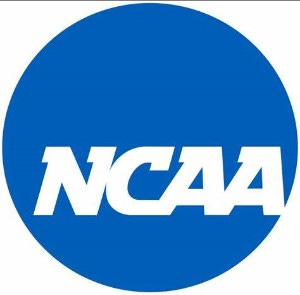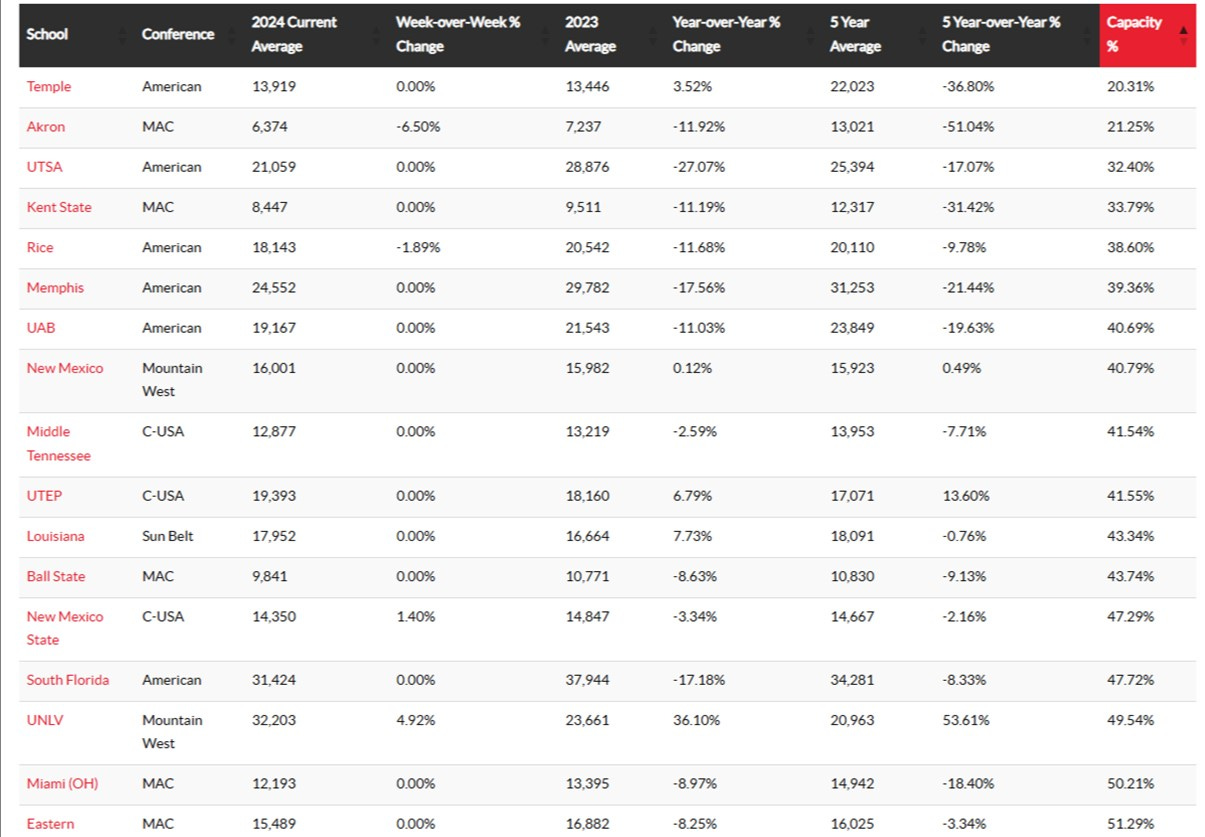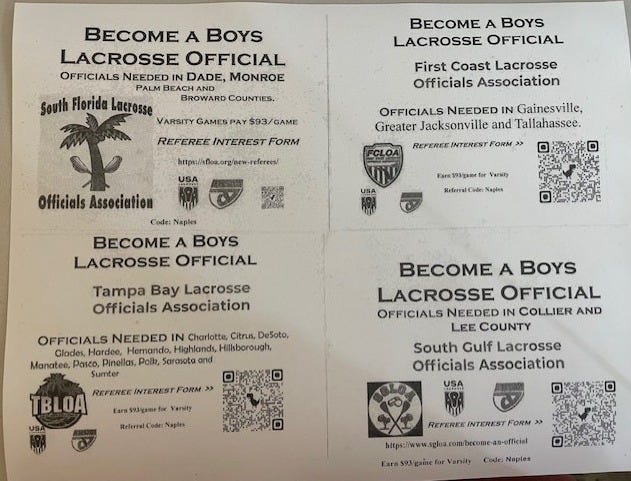Florida Lacrosse News on Substack 06/10/2025 - Special NCAA Court Case Review
Welcome to today's FREE post!
In this issue . . .
I’m dedicating this Substack to my thoughts on Friday’s landmark NCAA case, as well as taking parts of the judge’s opinion and analyzing what I think it means.
And then I’ll make the case for this being good long-term for lacrosse.
Free issue today . . . share it all over the place!
*****
*
#TAFTAG
#LayOffTheRefs
#FloridaRising
#LacrosseFanandDamnProudOfIt
#StopYellingWard
#AcknowledgeFloridaLacrosse
*****
The NCAA Pay Case is Settled
*
This Substack is dedicated to the NCAA settlement. For those who are not aware, on Friday we received the final approval from Judge Claudia Wilken. As ESPN’s Daniel Murphy put it:
“Judge Claudia Wilken approved the deal between the NCAA, its most powerful conferences and lawyers representing all Division I athletes. The House v. NCAA settlement ends three separate federal antitrust lawsuits, all of which claimed the NCAA was illegally limiting the earning power of college athletes.” - LINK
So, let’s get into the details of that decision, with my thoughts. Each section starts with an excerpt from the ruling. This is a 72-page ruling.
LINK to the ruling.
*
Section 1 - What was ruled on?
Excerpt from page 2:
Now before the Court is a motion for final approval of a settlement agreement that would resolve all of Plaintiffs’ claims for monetary and injunctive relief. Plaintiffs represent that there are 389,700 current members of the settlement classes. If approved, the settlement agreement would result in the distribution of $2.576 billion in damages for members of the settlement classes who have been unable to receive compensation for the use of their NIL and for their athletic services. It would also result in ground-breaking changes in NCAA rules that govern student-athlete compensation, which would enable NCAA schools to share their athletic revenues with Division I college student-athletes for the first time in the history of the NCAA and would eliminate NCAA limits on scholarships. This is expected to open the door for Division I student-athletes to receive, in the aggregate, approximately $1.6 billion dollars in new compensation and benefits per year, with that amount increasing over the next ten years.
Lee:
This has been in the works for many years. Even back in high school, I wrote a paper about how tight the regulatory environment was for athletes with the NCAA’s over-the-top rules. Imagine losing your full college eligibility for accepting a free lunch from a member of the college community, or a family friend paying for a bus ticket home for a weekend to visit an ailing parent. Hard to believe, but this was pretty much commonplace in rulings, and the athlete had almost no chance of winning an appeal. That ‘stinginess’ set the environment for the legal system to attack the inequity, since a lot of the ‘banned’ athletes were minorities.
By the way, $2,576,000,000 / 389,700 plaintiffs is about $6,610 each. We’ll see if that is further discussed later.
I did notice in some of the language that this agreement managed to merge a number of cases around the subjects of direct compensation and NIL revenue sharing, with O’Bannon, Alston, Oliver, Prince and Carter among the named cases, as those with a legal background might recognize. It also consolidates decisions that were made at many levels and differences in those opinions.
Section 2 - The three proposed damages classes under Rule 23(b)(3) (Damages Settlement Classes)
Excerpt from page 8:
Football and Men’s Basketball Class:
All student-athletes who have received or will receive full GIA scholarships and compete on, competed on, or will compete on a Division I men’s basketball team or an FBS football team, at a college or university that is a member of one of the Power Five Conferences (including Notre Dame), and who have been or will be declared initially eligible for competition in Division I at any time from June 15, 2016 through September 15, 2024.
The proposed representatives for this class are Tymir Oliver and DeWayne Carter.
Women’s Basketball Class:
All student-athletes who have received or will receive full GIA scholarships and compete on, competed on, or will compete on a Division I women’s basketball team at a college or university that is a member of one the Power Five Conferences (including Notre Dame), and who have been or will be declared initially eligible for competition in Division I at any time from June 15, 2016 through September 15, 2024.
The proposed representative for this class is Sedona Prince.
Additional Sports Class:
Excluding members of the Football and Men’s Basketball Class and members of the Women’s Basketball Class, all student-athletes who compete on, competed on, or will compete on a Division I athletic team and who have been or will be declared initially eligible for competition in Division I at any time from June 15, 2016 through September 15, 2024.
Lee:
It doesn’t take a rocket scientist to know that the revenue-generating sports were going to get favorable treatment in this settlement, and it isn’t a surprise that Women’s Basketball would also get a carve out due to the fact that Women’s Football doesn’t really exist yet as an offset. Women’s Basketball is the biggest revenue producer currently for the women, and Title IX didn’t need any compromising or violations produced here, so this is how they get compensated for settling.
The Additional Class is where the Lacrosse community will reside, and that seems to be the biggest angst among the lacrosse writers that have already chimed in with their editorials. Fears of programs going away, roster sizes being trimmed, etc., are being predicted already.
I’ll withhold judgment on those claims, as the sport has faced a lot of funding issues for many years, so it could just be premature to say this will result in programs being cut. We saw a few go away recently, with the school itself going out of business, or deciding to go from D1 to D3, like St Francis announced. The sport has always faced challenges at the D1 level (Men in particular due to Title IX issues that have been written about a lot over the years).
Pages 9-11 focus on how past athletes will divide up settlements for those who are already graduated/out of eligibility and the top 2 groups will get almost all of that settlement money.
Section 3 - Injunctive Relief Settlement
Excerpt from pages 11-13
The SA also provides for injunctive relief for members of the Injunctive Relief Class. The injunctive relief aspect of the SA is referred to as the “Second Amended Injunctive Relief Settlement” (Injunctive Relief Settlement or IRS), which is set forth in Appendix A to the SA. It permits the NCAA and its members to modify existing NCAA rules and to enact new rules that govern student-athlete compensation and rosters over a ten-year period following the approval of the SA. See SA ¶ 1(cc). The rule modifications that the IRS permits will apply only to NCAA members that choose to participate in the Injunctive Relief Settlement. Some of these modifications are described below.
Lee:
As I read through the modifications, I see the following:
The amount of the sharing with athletes is based on a fixed percentage of the revenue generated for the three classes. 22% is the targeted number, and the estimates are the ‘Pool’ starts at a little over $20 million per year, growing to an estimated $34 million in ten years. These numbers have been featured a lot in the previous writeups I’ve seen.
As part of the settlement, the number of scholarships cannot be limited, but roster size can be. Given our 12.6 scholarship limit going into the ruling, I can’t see this being a negative for lacrosse, as I’ll describe later. As far as roster sizes are concerned, I’ve seen some worries about 48 being the maximum, but how many schools are there already?
The third part of the IRS ruling is that the NCAA still can define WHO can make a payment but tightens what they can challenge. The term ‘Associated Person’ is used, and it looks to be targeted at what we traditionally call a ‘Booster of the Program’. There are definitions covering that. One major difference will be that if the NCAA wants to challenge a payment provider, it goes to a neutral arbitration, instead of the NCAA having final say. The wording has enough latitude that there will likely be some court cases defining this further as the payments kick in.
Section 4 - The SA (settlement Agreement) permits the NCAA to adopt roster limits for Division I sports (with modifiers, as explained here)
Excerpt for page 13:
“After the final approval hearing, the parties modified the SA to provide that settlement class members whose roster spots were taken away or would have been taken away because of the immediate implementation of the SA will be exempt from roster limits at any Division I school for the duration of their college athletics careers. This means that the class members in question will not count toward any school’s roster limit for the remainder of their Division I athletic eligibility.”
Lee:
We’ll see how roster sizes are set. As I mentioned above, if 48 is the number, I don’t see that as a major impediment to anything. I doubt we’d see scholarship money going to the 49th and 50th members anyhow in any great amounts. I would assume that Syracuse Lacrosse is probably the biggest generator of revenue in D1, but the amount likely does not cover all the expenses of the program.
A large part of the next sections beyond page 13 are technical in nature, talking about how the various lawsuits get wound up into the settlement agreement, possible opt outs of the agreement, and a few other things, including distribution of claims.
The rest of the ruling talks in detail about appeals that were made prior to the final ruling, mostly legal/technical in nature, and they deal with why the Judge decided to overrule the appeals. There’s really no reason to go into detail on those, with one exception, and that is on Page 63, discussing Title IX.
Section 5: Title IX
Excerpt on pages 63-64
Some objectors argue that the SA is unfair to female class members because it violates Title IX of the Education Amendments of 1972, 20 U.S.C. § 1681, et seq., in two ways: because the SA’s damages allocations favor male class members over female class members in violation of Title IX, and because the SA does not contain any provisions that require that benefits and compensation provided to class members pursuant to the Injunctive Relief Settlement be made in compliance with Title IX.
The Court overrules these objections. First, the objectors have cited no authority that Title IX applies to damages awards distributions or that damages distributions made by a claims administrator are subject to Title IX. Accordingly, the Court cannot conclude that Title IX violations will occur when the Gross Settlement Fund is distributed by the claims administrator pursuant to the damages allocations that Plaintiffs have proposed.16 Second, the Court cannot conclude that violations of Title IX will necessarily occur if and when schools choose to provide compensation and benefits to student-athletes pursuant to the Injunctive Relief Settlement. To the extent that Title IX governs benefits and compensation provided by schools pursuant to the Injunctive Relief Settlement, schools will be free to allocate those benefits and compensation in a manner that complies with Title IX. There is nothing in the SA that would prevent or prohibit schools from distributing benefits and compensation pursuant to the Injunctive Relief Settlement in a manner that complies with Title IX. Further, the SA does not require class members to release claims arising out of Title IX in connection with the implementation of the Injunctive Relief Settlement. See SA ¶ 1(ww) (providing that claims under Title IX are not released, except for claims arising out of or relating to the distribution of the Gross Settlement Fund). Thus, to the extent that schools violate Title IX when providing benefits and compensation to student-athletes pursuant to the Injunctive Settlement Agreement, class members will have the right to file lawsuits arising out of those violations.
Lee:
Really, not much to add. If the future benefits and compensation are in violation, plaintiffs can bring forward Title IX lawsuits, and I suspect we’ll see a few.
*****
What Might This Mean for College Lacrosse?
*
I haven’t read a lot of analysis yet, but what I read seems to fit one word . . .
Trepidation.
Worry comes in a close second.
I’m not sure that this is correct; it could well turn out to be a huge long-term boost for Men’s College Lacrosse in general. I don’t think there will be much of a difference for the Women in D1, as a lot of the growth followed both the need for Title IX compliance, as well as the demand for programs to meet the increase in female participation.
We know we are not a revenue-generating sport and with the Title IX issue, the number of Men’s programs has barely budged for many years. The biggest impediment to our growth, according to many, is the issue of Title IX and football taking up a lot of the male slots. Many sports have seen cuts . . . wrestling, gymnastics, etc., while we have stayed stagnant.
Over the past few decades, the Power conferences have taken up more and more of the revenue generation. Slots in an expanded BCS, slots in an expanded March Madness, and in my opinion, the biggest differentiator of all, in dedicated branded cable stations, which have generated enormous cash flow that helps many of the big football schools to fund their school’s minor sports.
Does this ruling make that gap between the Power conferences and the rest even bigger? Will this force the issue of mid-level conferences (and in particular, the ‘bottom-feeder’ teams in those conferences) to assess if giving up football and emphasizing other sports makes a lot more sense?
There are 3 conferences with substantial revenue coming from their cable channels:
The ACC with 17 schools
The B1G Ten with 18 schools
The SEC with 16 schools
The ACC and the B1G Ten have lacrosse programs, but at a much small participation level than the number of schools, with 5 Men’s programs in the B1G Ten, plus non-member JHU and the ACC with 4, plus Notre Dame.
That’s a lot of potential schools, but football is not going away at any of them due to the need to generate revenue from the cable stations. There’s probably a clause in the revenue sharing that both football and basketball must be present to earn a full share.
The Big 12 has 16 teams and only Utah plays Men’s lacrosse, in another conference.
The American Conference has 14 teams, with Army and Navy in the Patriot League for lacrosse. Conference USA has 10 teams, none of them play NCAA Men’s lacrosse. The Mid-American has 12 schools, and none play NCAA Men’s lacrosse. The Mountain West has 12 schools, only Air Force plays D1 lacrosse. The Sun Belt has 12 schools, and none play D1 Men’s lacrosse.
I should note that MANY of these schools have long-standing MCLA lacrosse programs and NCAA Women’s programs.
As the arms race to attract players grows, the pressure on the schools not in the Power Conferences grows, as they likely cannot keep up with attracting top players. Falling admissions numbers are happening around the country, as birth rates have taken a big downturn.
Over time, things add up and a college needs to make a decision on where to spend money. There will be some of these schools either dropping out of D1 football or even dropping the sport to fund other programs. and that’s where lacrosse can pick up the crumbs. Our demographic is wealthier. Colleges can decide to focus on other sports due to where they think they can make an impact.
Here’s a LINK to the 2024 attendance numbers for the D1 programs
A few items of note:
There are a number of D1 football teams that play at below 50% of their capacity, led by Temple and Akron:
There’s obviously more to this, but you get the point.
Why is Temple bothering to play football at this point? 4 straight 3-9 seasons and attendance absolutely blows. Akron draws almost no one. Kent State draws no one. ALL 3 have D1 Women’s programs.
These teams are good for one thing . . . as homecoming opponents or for an Alabama to write a check to for a rout.
Temple is in PHILADELPHIA, a lacrosse hotbed. Kent State and Akron are in a state with a burgeoning lacrosse scene in Ohio. How many more bad teams and deficit spending (the American and the MAC don’t have dedicated cable stations) will they be able to absorb before an enterprising AD and President say “drop football and take on Men’s lacrosse”?
Rice University has always intrigued me as a place for lacrosse. Very highly rated for academics, yet their football program hasn’t been relevant for many years. An enormous endowment of over $8 billion. This seems like a natural fit for our sport.
Need I say more?
The new environment for NCAA sports will likely speed up the widening gap between the haves and have nots in football; will we be the ones to benefit the most? Look at how many opportunities are out there if I am right.
*****
South Florida: https://sfloa.org/new-referees/
First Coast: Use the scan if it works (will First Coast please give me an alternative?)
Tampa Bay: Use the scan if it works (will Tampa please give me an alternative?)
South Gulf: https://sgloa.com/become-an-official








